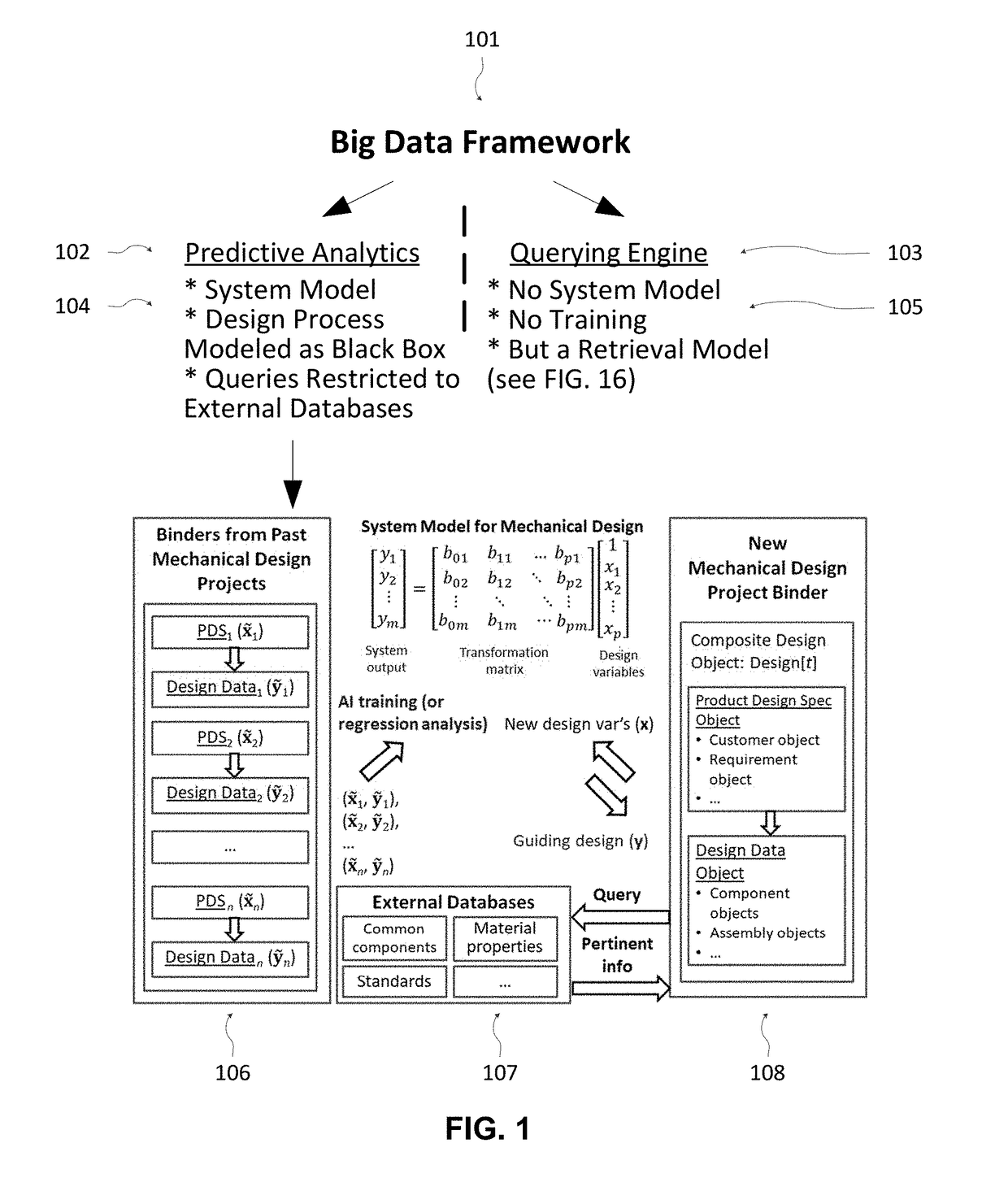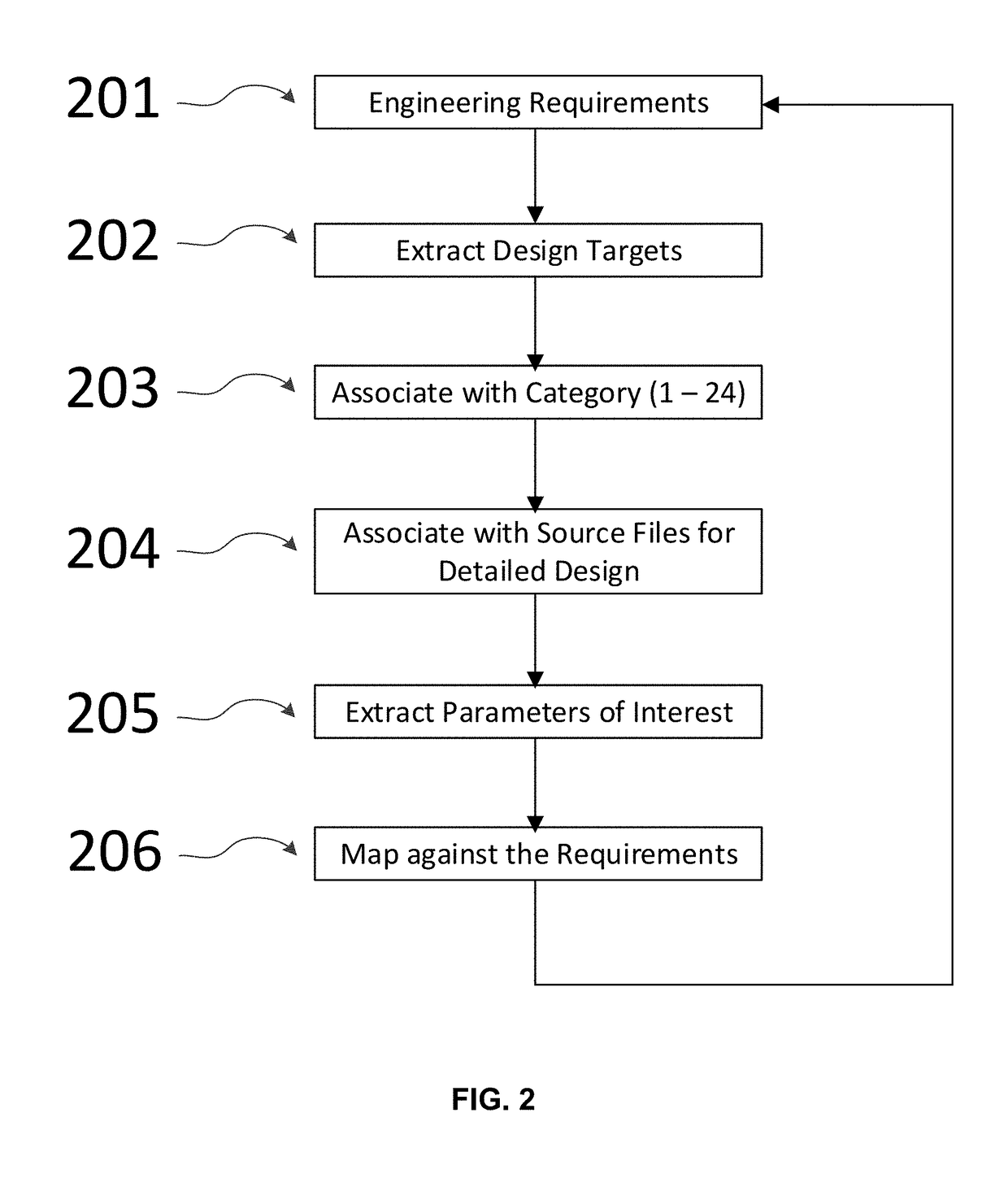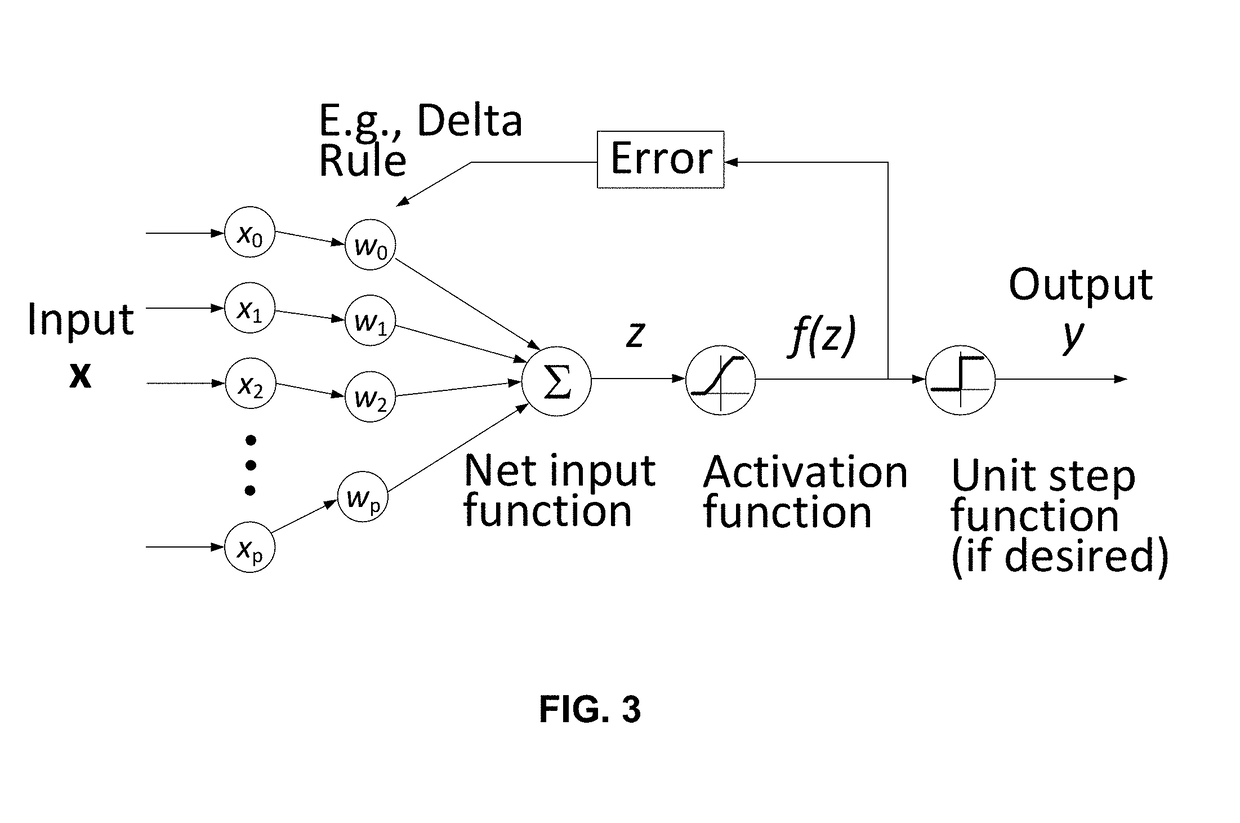Decisions with Big Data
a big data and decision technology, applied in the field of decision making with big data, can solve the problems of inability to achieve the effect of big data, inability to meet the needs of large-scale data collection, etc., and achieve the effect of improving efficiency and efficacy
- Summary
- Abstract
- Description
- Claims
- Application Information
AI Technical Summary
Benefits of technology
Problems solved by technology
Method used
Image
Examples
Embodiment Construction
1. Definitions
[0134]Table 2 captures the primary acronyms used in the patent.
TABLE 2Summary of the primary definitions and acronyms.NameDefinitionAIArtificial IntelligenceCAGCommander, Air GroupCNNConvolutional Neural NetworkDCCDewey Decimal ClassificationDLDeep LearningDODDepartment of DefenseFLOPFloating Point OperationIRInformation RetrievalJMPSJoint Mission Planning SystemLIDARLight Imaging Detection And RangingLMSLease Mean SquareLSALatent Semantic AnalysisLSILatent Semantic IndexingMEDALMine Warfare Environmental Decision Aid LibraryMLMachine LearningOEMOriginal Equipment ManufacturerPDFProbability Density FunctionPDSProduct Design SpecificationPLMProduct Lifecycle ManagementSLAMSimultaneous Localization and MappingSVDSingular Value DecompositionSWSoftware
[0135]We define artificial intelligence as the use of computers to mimic the cognitive functions of humans. When machines carry out tasks based on algorithms in an “intelligent” manner, that is AI. Artificial intelligence is ...
PUM
 Login to View More
Login to View More Abstract
Description
Claims
Application Information
 Login to View More
Login to View More - R&D
- Intellectual Property
- Life Sciences
- Materials
- Tech Scout
- Unparalleled Data Quality
- Higher Quality Content
- 60% Fewer Hallucinations
Browse by: Latest US Patents, China's latest patents, Technical Efficacy Thesaurus, Application Domain, Technology Topic, Popular Technical Reports.
© 2025 PatSnap. All rights reserved.Legal|Privacy policy|Modern Slavery Act Transparency Statement|Sitemap|About US| Contact US: help@patsnap.com



